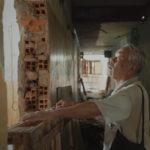The Space of/for Memory: ”Last Night I Saw You Smiling”
about 64 months ago (03/19/2020)
The Space of/for Memory: ”Last Night I Saw You Smiling” | ArtsEquator Thinking and Talking about Arts and Culture in Southeast Asia Articles Courtesy of artist March 19, 2020 By Alfonse Chiu (2,078 words, 7-minute read) Every space tells a story: the empty prison cell speaks of redemptions, of wrongs that were righted, and to the cynical, more earthly, minds, of miscarriages of justice, and the irrevocability of tragedies and the people who made them; the crowded hospital ward hums, sometimes a baleful tune when a heart attack becomes a full-body scan becomes something decidedly terminal, and sometimes a bright chime when a newborn takes their first breaths and screams to announce their entry into this world; and tales of homes, houses, and hauntings have infested almost every definition and genre of fiction and non-fiction known to mankind: killing, nourishing, obscuring, stagnating, etc. Almost always, the space is tangible, is physical—a place, if you will, when pinned against definitions. Writing in the 1970s, geographer Yi-Fu Tuan notes that “[w]hat begins as undifferentiated space becomes place as we get to know it better and endow it with value.” [1] For Tuan, a space is a location that goes unmarked and represents a fundamental abstraction, but also potential for development, while a place is a space that is meaningful, guided by conversance and functions that are sometimes biological—“for food, water, rest, and procreation,”—but frequently psychological, constituted by an amalgamation of lived experiences, memories, and humanity’s astonishing capacity for symbolisation and constructing narratives, telling stories basically, in a manner of speaking.
